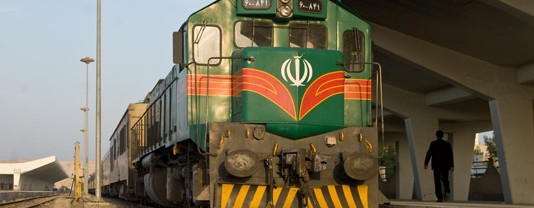Bandar Abbas is not only the capital of the Hormozgan Province, but also Iran’s most important commercial port, not to mention that it is considered the headquarters of the main port gate of the Iranian Rail network. The chance to visit the rail and port infrastructures, accompanied by Mr. Pour Fakhri, Director-General of the Hormozgan Railway District of Iranian Railways, is a unique opportunity to get an authoritative and updated picture of the huge effort Iran is making to develop rail and sea transport, maximizing integration between the two.
Our interview with Mr. Pour Fakhri takes place during a long tour, first on board a comfortable minibus and then on foot between the railway tracks and quays, to get a closer look at how Iran’s largest port operates and how the Iranian Railways work to support it.
Our visit starts at the regional headquarters of the Iranian Railways, just a few yards away from the Bandar Abbas passenger station, and proceeds west, a few kilometres out of the city, to the site of the new commercial port.
Railway Engineering: The Iranian national railways include various regional districts: you are in charge of the Hormozgan district. Can you tell us about the railway system in this district and its distinguishing features?
Engineer Pour Fakhri: The Iranian rail network is divided, from an operational and administrative point of view, into 18 regional districts. The Hormozgan railway district was put into operation in 1990. In this district the railway network covers 650 km from Bafq to the station in Bandar Abbas. This line, which was originally built as a single track railway, is now all double track thanks to recent completion of track doubling work on the last 180 km from Tazerej to Bandar Abbas.
Full article is available only for registered users.
Click the link below to download pdf version of Railway Engineering
